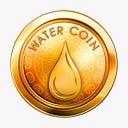The birth of blockchain and bitcoins
Let’s talk about the origin of blockchain technology, blockchain emerges as an indispensable support mechanism for the existence of a digital currency. And that fact plays a key role in understanding this technology.
The first mention of Bitcoin, a form of electronic money on a peer-to-peer (P2P) network, appears in a paper written by a certain Satoshi Nakamoto in 2008. It turns out that this name doesn’t correspond to a real person. It is speculated that this is a group of authors who used a pseudonym. The mystery behind the name continued after Bitcoin’s appearance in 2009 in the form of open source software, a type of program license that allows anyone to inspect, modify and improve.
Bitcoin software allowed for the existence of a digital currency that could be used without intermediaries or supervisory authority. Currency can be circulated from one person to another without the need for banks or financial intermediaries. That’s why it’s the opposite of every form of currency we know and use.
Bitcoin is a cryptocurrency because the record of the existence of a transaction is visible to everyone. Although the content is known only to the people who make and receive that individual transaction, what others cannot see is encrypted and what they can see is not. From here comes the prefix crypto in the word cryptocurrency, since the coin has no physical shape, there are no banknotes or coins. Its habitat is the Internet.
When there is a transaction, participants using Bitcoin through their computers validate that transaction and it is recorded in a distributed database. What is this record called? Exactly, it’s blockchain technology.
How does a digital currency acquire value so that something has value? Usually the requirements are that it is scarce and that other people accept it as a form of payment.
Gold, silver, diamonds and oil, for example, gain value because they are scarce and expensive to extract. How does this apply to digital currency? The first feature is that there are only a limited number of bitcoins available. The creator calculated that there would be around 21 million bitcoins. It is not known why he chose this value. The second feature is how people or organizations can acquire bitcoins. Unlike existing tradable Bitcoin, acquiring new Bitcoin requires a unique type of mining, as with gold. New bitcoins are earned as a reward when chain participants solve increasingly complex math puzzles as transactions occur on the blockchain. The people who are dedicated to solving these problems are called miners. It requires a considerable amount of computing power. In other words, the cost of mining new bitcoins is very high. It requires a lot of processors and electrical power. When a puzzle is solved, the miner is rewarded with Bitcoin. You can trade it freely on the global Bitcoin exchange. The later value is calculated like any other currency by the law of supply and demand. If demand is high, its value will increase if demand decreases, the same goes for the price. Surely you think the bitcoins will reach mine in no time. However, math problems are becoming more and more complicated and the speed of mining is slowing down. The forecast is that the last Bitcoin will be looked at 2140. Although there is no certainty. To spend and earn bitcoins, the user must have an electronic wallet on the computer, or it can also be with an app on the cell phone. The user can buy bitcoins from a seller and use their wallet to send and receive payments from other users and organizations.
You don’t have to be a bitcoin miner to get one. You simply have to buy it in bitcoin exchange. That is, with dollars or your local currency, you can buy bitcoins. The foreign exchange market also allows you to exchange them for dollars. A wallet transaction is added to the row, is validated by other bitcoin users, and if approved, is added as a block to the distributed database, the blockchain. An important detail is that to add a block, miners must work. This adds a form of validation to the transaction. That is, if a miner is needed for the transaction, fraudulent activity is nearly impossible. A hacker must simulate the processing and power capacity of all miners to fraudulently add a block to the chain. The system that forces the valid miners into each block is added using a mathematical puzzle called proof of work. Financial institutions have simply watched digital money move across the Internet, with no central authority, no friction, and virtually no cost.
Better yet, the Bitcoin universe or the public blockchain database doesn’t belong to anyone. It’s extremely safe. Transactions are anonymous and fast. The other quality of any currency is that it is accepted as a form of payment. Bitcoins can be used to buy anything. Of course, wide acceptance is critical to your success. After all, without acceptance it would be worth nothing. Of course, thanks to being decentralized, it’s private and undetectable. Bitcoin has found its niche in all kinds of illegal activities. However, the large number of legitimate currency conversions also ensure legitimate use of Bitcoin. Some big brands like Microsoft, Expedia, Subway, OverStock.com, iFood, among others, accept Bitcoin as a payment method. Of course, the coin is not perfect and it is in full swing. The core is still maturing. There are still some limitations and threats. It also served as an inspiration for other digital currencies, such as Ether. Bitcoin is a revolutionary currency, breaking the financial status quo and presenting a series of challenges to the government, regulation and legality of its existence. As far as this article is concerned, what matters is that it gave rise to blockchain technology, which in turn has the opportunity to transform everything like the Internet did.
Originally published at https://www.reddit.com.
